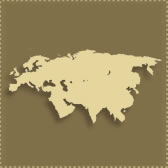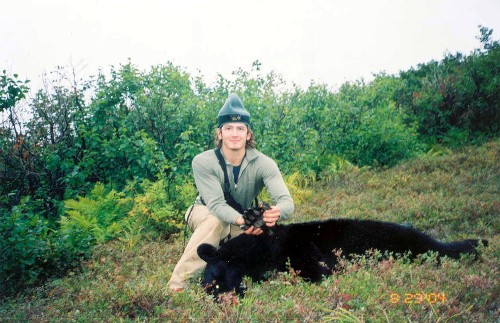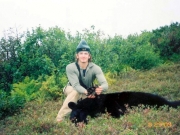Adventure Planner
Bears – General
Bears are an animal that have fascinated mankind from our beginning. They invoke mystery and intrigue in the heart of all hunters. Bear hunting is not for everybody due to personal beliefs and opinions of various hunters, but in general, bear hunting is very popular. We have been arranging hunting trips for bears for over 50 years and can say, without reservation, that bear hunting is as good or better now as it has ever been in modern hunting.
One thing for sure, if you specialize in hunting big bear, like any other game species, you have to concentrate on that animal. You must first go where that species is abundant. Take enough time to give yourself a fair chance. Considerable walking may be necessary. To take a big bear, you must pass up many small bears.
Black Bears | Brown Bears | Grizzly Bears
There are three species of bears in North America, the black bear, grizzly bear, and polar bear. Black bear come in various sizes and colors, depending on what they eat and what region they are from. Southeast British Columbia, Alberta, Idaho, and Montana have various coloration of bears, while black bears in Alaska are all generally black. A study recently completed by conservation force puts black bear populations in North America at well over one million.
Some confusion surrounds brown bear versus grizzly bear. In reality, “brown bears” are actually grizzly bears, although “brown bears” are larger than interior grizzly bears. Much of the reason is that they are fish fed and live in milder climates at lower elevations along coastal areas. This increased protein intake allows them to grow to a larger size. Also, lower elevation areas mean that the bears spend less time in hibernation. Many areas of Alaska, such as the Brooks Range and the Alaska Range, have loosened quota dramatically in an effort to boost moose populations due to bear predation. Many areas of Alaska now allow one Brown or Grizzly per year and in a few cases 2 or more bears per year! Game managers are encouraging outfitters and sportsman to shoot more bears. Some of our boat hunts in southeast Alaska for brown bears produce typical sightings of 50 to 70+ brown bear per hunt!
Without question, some of the biggest “brown bears” come from areas like Kodiak Island and the Alaskan Peninsula. These are the biggest grizzlies in the world.
While British Columbia has a strong population of grizzly bears throughout its province, quotas have been tightened due to misguided organizations and weak government officials. Some decisions have been made based on emotions and not sound game management. The Yukon offers excellent grizzly bear hunting as well, either by spring hunting or as an additional trophy to be taken on other mixed bag hunts.
Although Russia is closed to hunting for the foreseeable future, Siberian (or Kamchatka) brown bear were hunted there in the past and our clients had been historically very successful on these trips. They were hunted in late April and early May in deep snow, using snowmobiles for transportation and tent camps for lodging. Hunting methods included spot-and-stalk, and also baiting.
Kamchatka brown bears are some of the most beautifully furred bears we have seen, rivaling large grizzly bears in size, although not quite as large as the largest Alaska brown bears.
Polar Bears
In North America, polar bears roam the far northern latitudes of Canada and Alaska. Their diet completely consist of seals, whales, and any other type of meat they can find. Polar bear hunting is a true Arctic adventure, and sanctioned hunts continue to this day. The Inuits have been hunting them by dogsled for centuries and began guiding modern sportsman in the early 1970’s. However, while US citizens can still hunt polar bears, importing polar bears to the United States is not currently possible. Despite healthy populations and management oversight by the Canadian government, there appears to be an ideological opposition within certain US government agencies to all forms of polar bear hunting.



